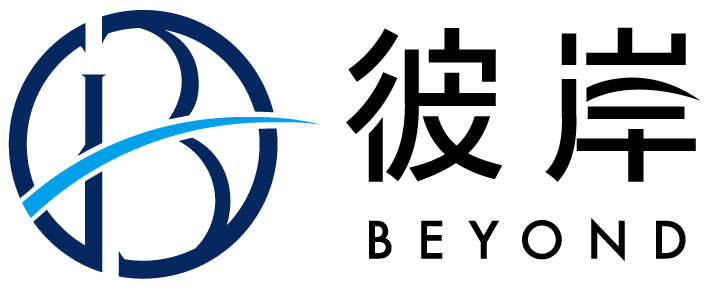Brand Localization for China: Adapt & Keep Your DNA

There is no market that exposes shallow localization faster than China.
You are dealing with more than a billion people online, digital natives, and a retail calendar built around constant promotions, live streams, and short videos. At the same time, Guochao, the rise of pride in Chinese culture and domestic brands, has rewritten what feels aspirational.
Being foreign is no longer enough.
So the core tension is simple:
Localization in China is non-negotiable. However, if you localize without a clear center, you risk erasing the DNA that made your brand desirable in the first place.
How The Game Has Changed
For a long time, foreign brands stood for rarity and modern life. If it came from overseas, it felt a step ahead.
As the middle class grew, global brands became shorthand for status and quality. Domestic brands were still catching up on product, design, and storytelling.
Today, Chinese brands have largely closed the quality gap and often move faster on culture and digital. Guochao has given local players a strong story, and Western brands have become one choice among many. Quality is assumed. Relevance comes from cultural fit and platform fluency.
Why Localization Is A Must
Two forces make deep localization essential in China.
1. Quality is a starting line
Chinese consumers still trust many Western brands for safety and engineering, but domestic brands have raised the bar.
If your main story in China is that you are high quality and international, you are competing with yesterday’s expectations.
To stand out now, you need to signal:
- You understand local needs and use cases
- You respect local taste and aesthetics
- You can communicate naturally inside the Chinese digital culture
2. Content is the store
Discovery, consideration, and purchase often happen in one continuous digital environment.
For many categories, the journey looks more like:
- Discover on Douyin or Xiaohongshu
- Validate through notes, comments, and social proof
- Convert through live stream, mini program, or e-commerce flagship
If your brand looks and sounds out of place in those feeds, it does not matter how strong your heritage is. It gets ignored.
Localization is no longer about translating a website. It is about rebuilding how your brand lives inside this content commerce loop.
What It Looks Like When Brands Get It Right [Apple & Coca-Cola]
The brands that succeed in China do not abandon who they are. They protect their core and flex everything around it.
Apple keeps:
- A minimalist, premium visual language
- Creativity-focused storytelling
- A clear and familiar product ecosystem
Apple adapts in China by:
- Building campaigns around Chinese festivals and e-commerce peaks
- Running tailored live sessions on platforms like Tmall
- Shaping offers for Chinese middle class spending habits
The Apple feeling is unchanged. The route from attention to purchase is very Chinese.
Coca-Cola keeps:
- The global promise of happiness and togetherness
- Iconic red, the logo, and the bottle silhouette
Coca-Cola adapts in China by:
- Using the Chinese name Kěkǒukělè, which translates as tasty fun
- Creating Chinese New Year editions that fit family rituals and gifting
- Collaborating with local artists and letting those designs travel on Chinese social platforms
The result still feels like Coca-Cola, simply expressed through Chinese moments and symbols.
A Simple Way To Frame Localization For China
A practical lens for global teams is to separate what must stay from what should move.
Layer 1: the non-negotiable core
What should be stable across markets:
- Brand purpose and big idea
- Fundamental values such as safety, joy, creativity, and freedom
- Distinctive visual codes, including logo, main colors, and key shapes
- Product truths, the things you reliably do better than others
If you compromise here, you start to look like every other international brand.
Layer 2: the China design space
The intentional flex:
- A Chinese name and key phrases with real meaning and memory value
- Cultural references drawn from festivals, cities, and youth scenes
- China only products, flavors, packs, and bundles for local occasions
- Promotion rhythms aligned with moments like six eighteen, eleven eleven, Qixi, and Double twelve
The core question for every adjustment is simple.
Does this express our big idea in a way that makes sense in China, or are we just decorating with cultural symbols?
Layer 3: platform native execution
Strategy turns into content and journeys:
- Douyin for short video storytelling and live commerce
- Xiaohongshu for reviews, lifestyle narratives, and community recommendations
- WeChat for membership, service flows, and mini program commerce
- Tmall, JD, and others for flagship ecommerce and peak events
The brand remains the same, but:
- Hooks and first seconds change
- Pacing and editing change
- Information density and on-screen layout change
You are not changing who you are. You are changing how you enter the scroll.
From Principle To Practice
Seeing China through this three-layer lens is the easy part. The challenge is turning it into daily choices on names, packs, formats, partners, and media. Under pressure, brands tend to either recycle global work or approve local ideas that slowly dilute who they are.
The ones who stay balanced usually have three things:
- A shared view of what is truly non-negotiable in the brand
- Clear, creative, and experienced territories for China
- A map of real platform journeys, so content follows how people actually move from seeing to buying
This is where BeyondBorderGroup works with teams, connecting a protected core to a Chinese expression that can stretch without losing itself.
